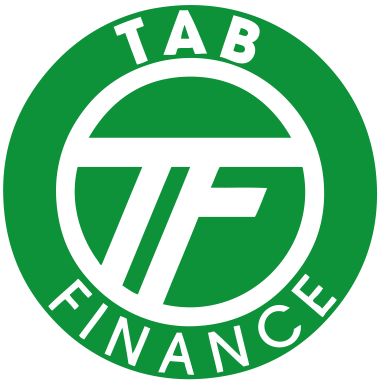
Straight line depreciation definition
Content

He most recently spent two years as the accountant at a commercial roofing company utilizing QuickBooks Desktop to compile financials, job cost, and run payroll. Let’s assume that we acquired a fixed asset for $50,000 with an estimated salvage value of $5,000 at the end of its 10-year useful life. Depreciation is recorded in the company’s accounting records through adjusting entries. Adjusting entries are recorded in the general journal using the last day of the accounting period.
- You can then record your depreciation expense to the general ledger while crediting the accumulated depreciation contra-account for the monthly depreciation expense total.
- They are normally found as a line item on the top of the balance sheet asset.
- He spends most of his time researching and studying to give the best answer to everyone.
- From buildings to machines, equipment and tools, every business will have one or more fixed assets likely susceptible to depreciate or wear out gradually over time.
- When calculating a business’s contra account, bad debts, depletion and depreciation of the company’s assets are all crucial deductions to make.
- So, the amount of depreciation declines over time, and continues until the salvage value is reached.
Larger corporations that report earnings to interested stakeholders may prefer straight line depreciation because it does not lower net income in earlier years. Consolidated Total Assets means, as of the date of any determination thereof, total assets of the Borrower and its Subsidiaries calculated in accordance with GAAP on a consolidated basis as of such date. If a business intends to use a relatively inexpensive asset for a long time, like a desk or a laptop, then it’s common for the salvage value to be zero.
Company
Accountants use the straight line depreciation method because it is the easiest to compute and can be applied to all long-term assets. However, the straight line method does not accurately reflect the difference in usage of an asset and may not be the most appropriate value calculation method for some depreciable assets. For example, assume you just purchased 15 new office desks for your employees.
For each accounting period, or year, the coffee shop would depreciate the espresso machine by $600. As the asset approaches the end of its useful life, it will eventually depreciate to its salvage value once the end of its useful life is reached. In the list of assets provided by ABC Company, we observed that each fixed asset has different useful lives. It means that we expect to retire the asset earlier than asset #2. But since these assets are interrelated, it would be inconsistent to depreciate them individually.
Declining Balance Method
A company may also choose to go with this method if it offers them tax or cash flow advantages. The straight line method of depreciation gradually reduces the value of fixed or tangible assets by a set amount over a specific period of time. Only tangible assets, or assets you can touch, can be depreciated, with intangible assets amortized instead. It’s used to reduce the carrying amount of a fixed asset over its useful life. With https://quickbooks-payroll.org/, an asset’s cost is depreciated the same amount for each accounting period.
Sally can now record straight line depreciation for her furniture each month for the next seven years. The easiest way to determine the useful life of an asset is to refer to the IRS tables, which are found in Publication 946, referenced above. If you don’t expect the asset to be worth much at the end of its useful life, be sure to figure that into the calculation. Here are some reasons your small business should use straight line depreciation. Suppose an asset for a business cost $11,000, will have a life of 5 years and a salvage value of $1,000.
Step 3: Calculate the asset’s useful life
Its scrap or salvage value of the asset—the price you think you can sell it for at the end of its useful life. Subtract the estimated salvage value of the asset from the amount at which it is recorded on the books. Depreciable property is an asset that is eligible for depreciation treatment in accordance with IRS rules. Accumulated depreciation is the cumulative depreciation of an asset up to a single point in its life. Investopedia requires writers to use primary sources to support their work.
Salvage Value Of The AssetSalvage value or scrap value is the estimated value of an asset after its useful life is over. For example, if a company’s machinery has a 5-year life and is only valued $5000 at the end of that time, the salvage value is $5000. The vehicle is estimated to have a useful life of 5 years and an estimated salvage of $15,000. According to straight line depreciation, the company machinery will depreciate $500 every year.
Being able to calculate depreciation is crucial for writing off the cost of expensive purchases, and for doing your taxes properly. It is easiest to use a standard useful life for each class of assets. Determine the straight line depreciation initial cost of the asset that has been recognized as a fixed asset. Depreciation is an accounting method of allocating the cost of a tangible asset over its useful life to account for declines in value over time.
A fixed asset account is reduced when paired with accumulated depreciation as it is a contra asset account. As an example, say you bought a copy machine for your business with a cost basis of $3,500 and a salvage value of $500. To arrive at your annual depreciation deduction, you would first subtract $500 from $3,500. The result, $600, would be your annual straight-line depreciation deduction. The straight-line depreciation method makes it easy for you to calculate the expense of any fixed asset in your business.
Step 2: Find and subtract any salvage value from the asset’s cost
Many assets will lose more of their value during their first few years of operation than later down the road. By using the double-declining balance depreciation method, companies can keep the larger expenses on the books during the first several years. Any smaller expenses that are incurred and used in a single accounting period cannot be depreciated. Instead these expenses are considered operating expenditures and can be taxed deducted in the same fiscal year when they were incurred.

